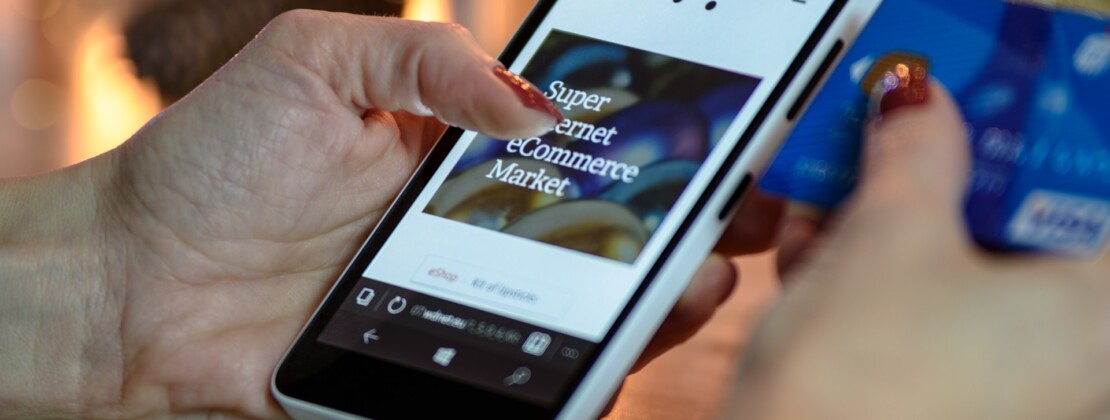Triggered email is a way to keep relationships with customers strong and increase your sales effectiveness. Statistics show that trigger based emails have a 381% higher click-through rate, and 624% higher conversion response compared to traditional messages.
Such emails are always timely, personalized and relevant, as the message is sent or triggered based on a subscriber’s specific actions. So, keep reading to learn more about different types of triggered email campaigns for e-commerce, and find out how to create them in SendPulse Automation 360.
Do triggered emails work?
Simply put, yes.
According to Yesmail data, triggered emails show higher open rates, click to open rates, as well as click-through rates compared to traditional emails.
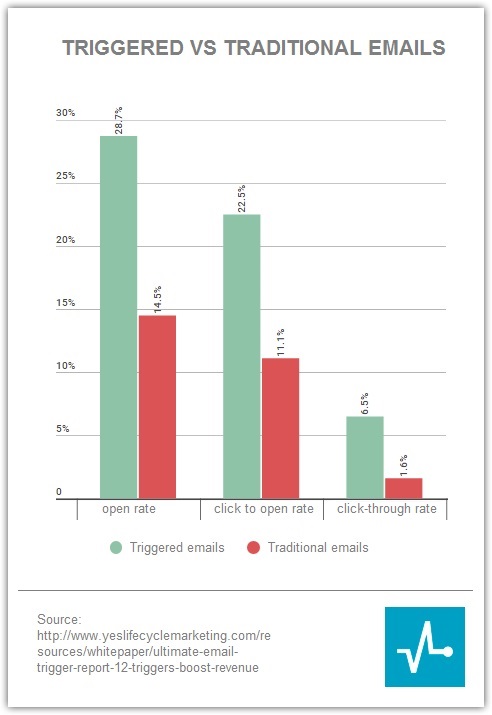
Yesmail has ranked different types of triggered emails, and welcome messages came in first based on their popularity among marketing specialists. Next in popularity are reactivation campaigns and shopping cart abandonment series.
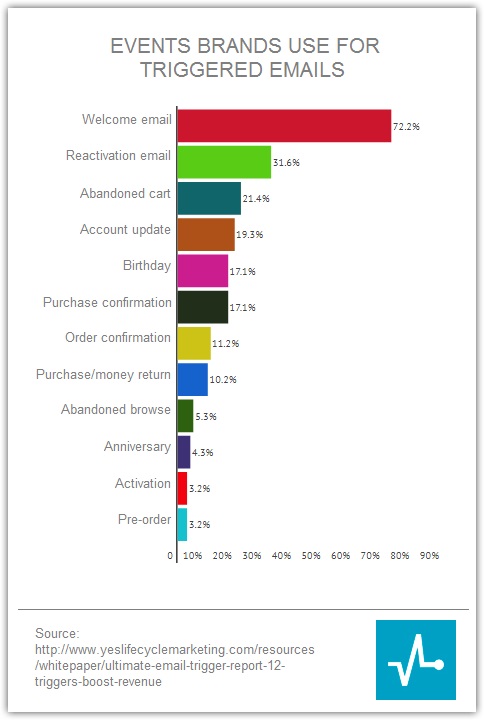
Let’s go over some examples of the most popular types of triggered emails.
Order confirmation or shipment confirmation email
As soon as a subscriber has ordered a product, send a confirmation email. Such an email is useful for the customer, as it:
- confirms that the order has been accepted
- specifies what product has been ordered
- indicates the price
- provides delivery information
- contains the return and cancellation policy
- includes contact details for customer care
A shipping confirmation message is aimed at reducing anxiety when the products are dispatched. This type of triggered email builds trust and loyalty, as well as encourages repeat purchases.
Below is an example from ASOS. This email message states that the order has been sent. We can see helpful links for the customer are included. Following the links, a customer can track the order, see the delivery details, review the return policy and contact customer service directly.
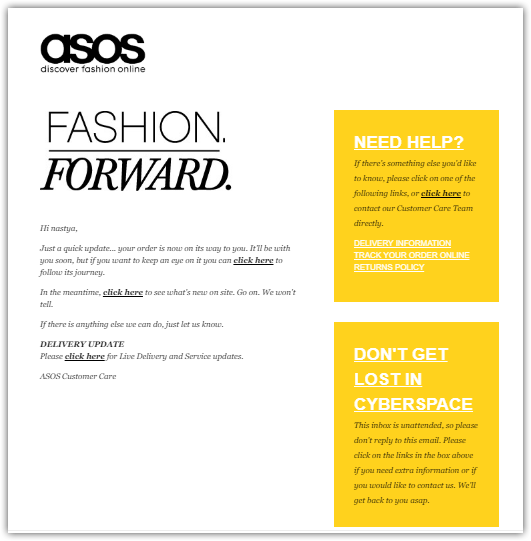
Thank-you email
Thank your customer for choosing you and include information specific to the item ordered to make your email relevant to the customer. According to Remarkety data, thank-you emails generate a 42% open rate, 18% click-through rate, and 10% conversion rate.
Warby Parker, an online retailer, shows the products purchased in its thank-you email.
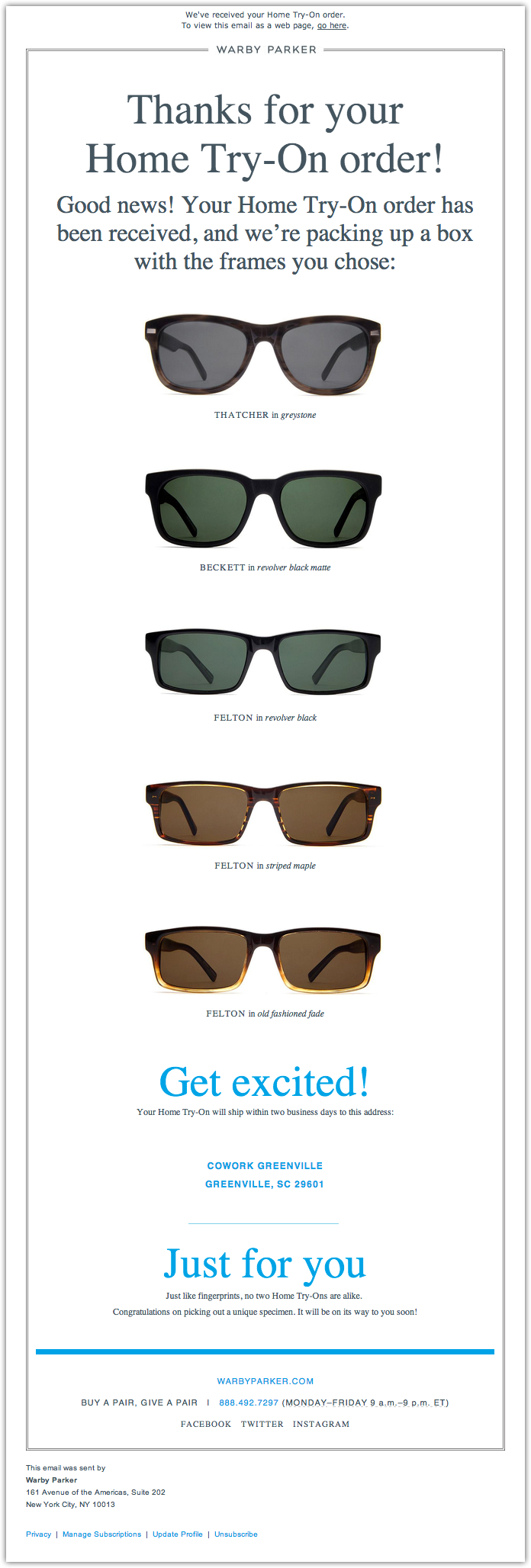
Abandoned cart
The average abandoned cart rate is 69.23%. An email triggered by shopping cart abandonment is not only a chance to get a potential client back to complete their purchase, but it is a must for e-commerce success. Here’s a tip: an abandoned cart campaign that consists of two emails is considered to be more effective.
Take a look at the example from Boohoo. The first email is sent right after a customer leaves the online store. It’s a reminder about the abandoned cart. The company tells a customer that the desired product is reserved for him.
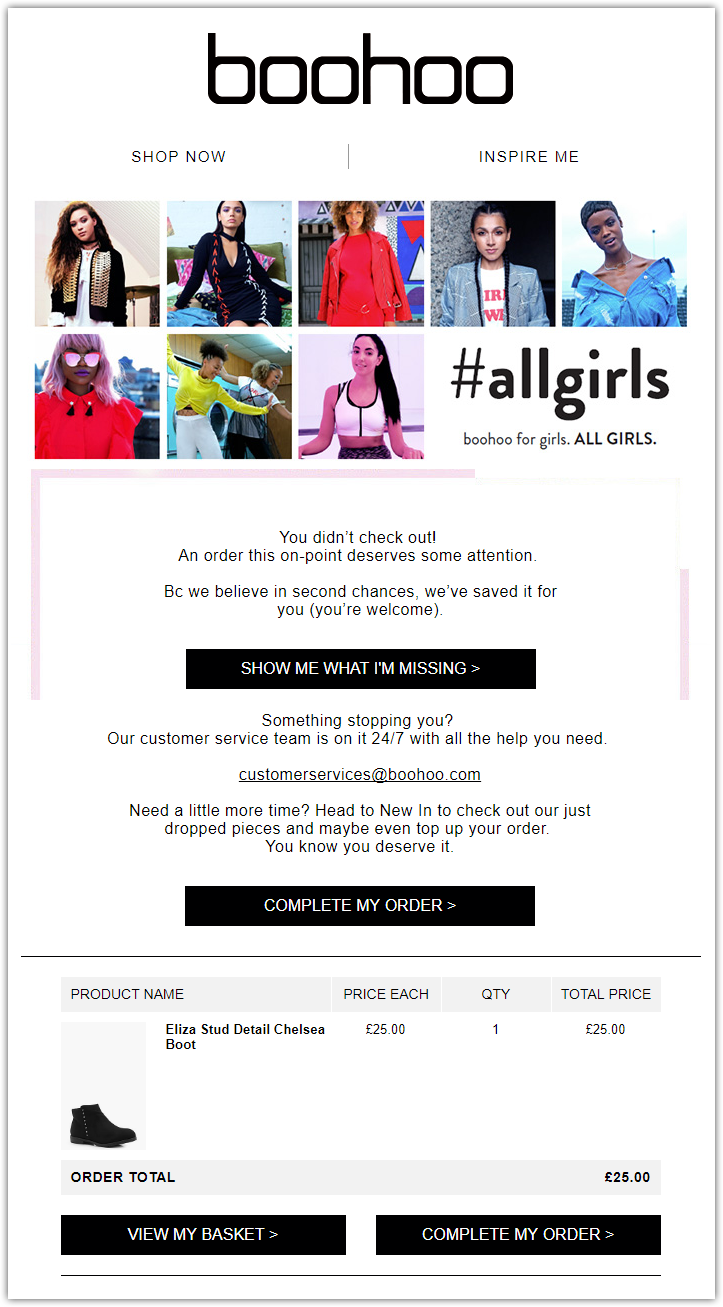
The second one is sent the following day. The company incentivizes the customer to complete the order by offering an additional discount. Plus, there is a cross-sell included by suggesting items that might catch the fancy of the customer.
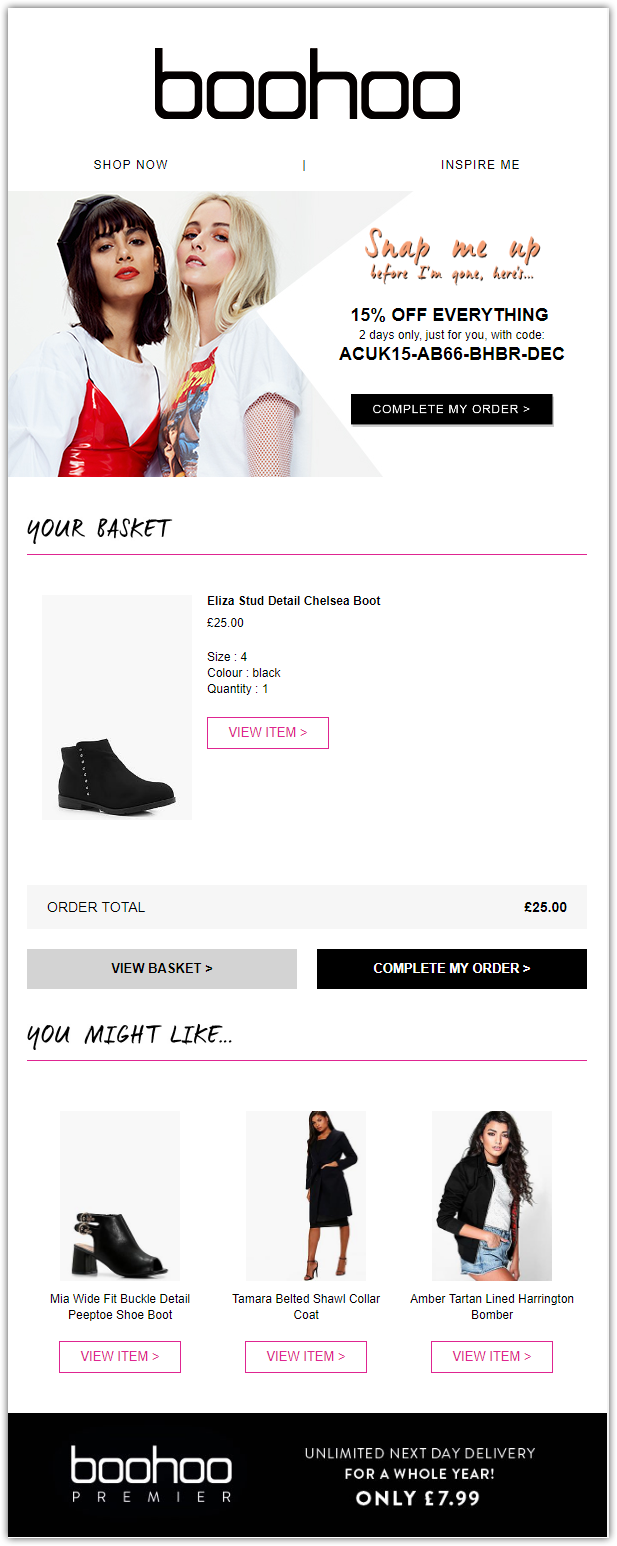
Abandoned browse
Emails triggered by an abandoned browsing session are sent to registered customers who have searched for a specific product on the website. These customers show serious interest with a high intent to purchase, so they receive a reminder about items that were viewed.
To provide an example, we browsed hotels in Spanish resort cities on Booking.com. The day after, an email appeared in our inbox offering choices of the best deals in the cities we surfed.
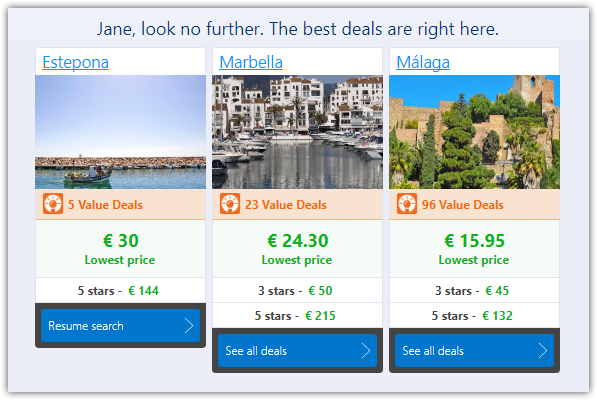
Back in stock email
Online stores often provide customers with a “Notify me when restocked” option. Such emails can be sent not only when the desired product is back in stock, but also when it drops in price. When developing this type of email, include a cross-sell suggestion of complementary products to the desired item or recommendations based on the customer’s wish list or past purchases.
For you to know: Back in stock emails has the highest open rate — 65.32% — performing almost 70% better than post-purchase emails.
Reactivation email
If a registered customer used your services or purchased your products, but then became inactive, include them in a re-engagement campaign. Ask the customer about their reasons for being inactive and provide a special offer to incentivize the desired actions.
Teespring is a platform where everyone can sell exclusive T-shirts and make money on it. If a subscriber shows no activity on the website, he receives a reactivation email. This email contains statistics on sold items and revenue from previous campaigns. By using these figures, the platform encourages subscribers to act.
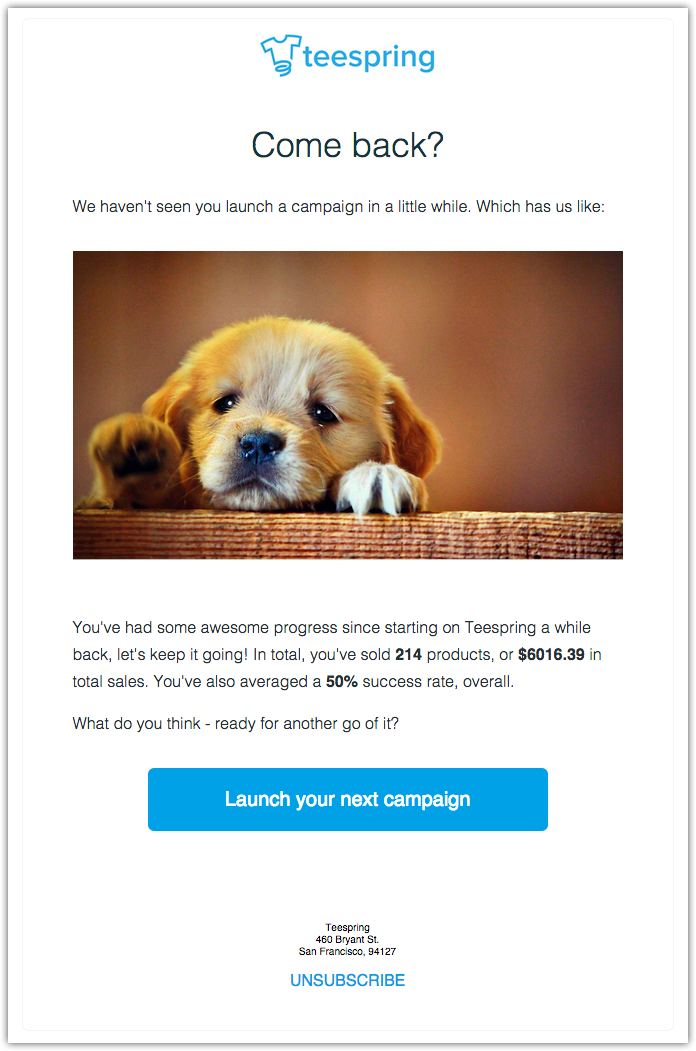
Special occasion email
Such messages are triggered by a calendar date that marks a birthday, anniversary or holiday. Special occasion emails are a great way to do something special for your customers and enhance their relationship with your brand.
To send special occasion emails, you need to collect data on subscribers regularly and far in advance. Here are several options to learn the birthdate of your subscribers:
- offer an incentive for answering a survey
- add a special field for date of birth to the personal profile
- send a letter offering a gift or discount for indicating the birthday
Nasty Gal sends warm wishes to a birthday girl with a creative call to action – Cheers!
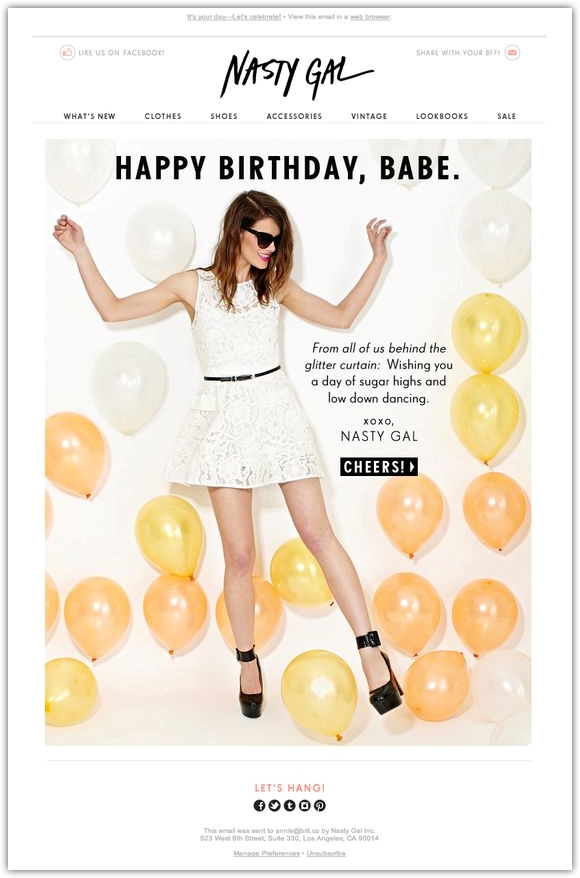
Littlewoods, an online store, congratulates customers with the anniversary they have with the brand using GIF. The company offers a 10% discount on the next order, building long-term customer loyalty and a positive brand image.
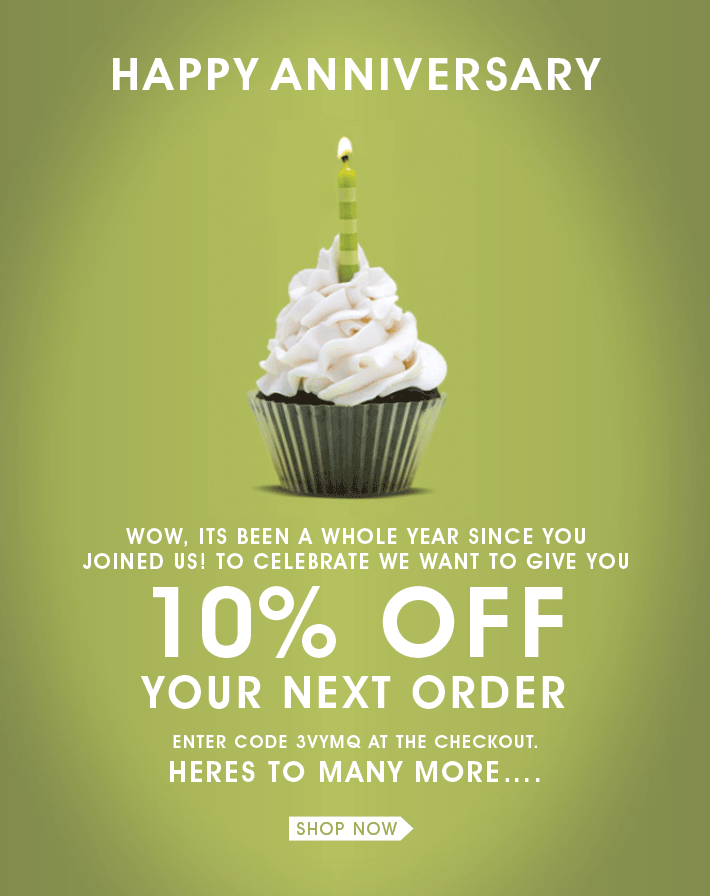
How to create triggered emails in SendPulse
All the emails mentioned above can be configured in SendPulse and most of them without the help of a programmer. The new Automation 360 feature allows you to create a complex triggered series based on a customer’s actions. Such a series can include email, SMS and web push notifications.
There are three predefined types of events in Automation 360: abandoned cart, purchase and registration. There is also availability to create an individual, custom event. All events created by a customer should be registered in the service.
To send emails based on a subscriber’s information in your mailing list, use filters. By applying filters, you can segment the list by gender, location, and date a subscriber joined your list. You can choose any variable to create filters.
There are also conditions that are used to configure emails triggered by a subscriber’s actions. Conditions are the actions performed by a subscriber inside the triggered email series. It can be an email open, click or any external event. Let’s say that a subscriber has performed a target action. In this case, he receives the next email configured in the series. Otherwise, a subscriber is redirected to another email series.
Taking an abandoned cart campaign as an example, we will show you how to create a triggered email series in SendPulse using Automation 360.
Step 1. Create an event to trigger an email.
Go to “Events Manager” and select the predefined “Abandoned Cart” block. It already includes standard variables that can be changed based on your needs. The system generates a URL. The signal along with data from your online store will be transmitted to this URL. The system also generates an example of data to be sent to this URL. This is overseen by a programmer who is experienced working with the script of your store. Once the data transmission from your store is set, you can configure the logic of sending in our service by yourself.

Step 2. Set start condition and create an abandoned cart email.
Go to the “Automations” section and select the “Create new automation” option. Choose the “Abandoned cart” event in the “Condition” block. Drag the “Email” block to the working area of the constructor. In our case, it’s an email about an abandoned cart. Enter the email subject line, for example, “We noticed that you left a few items in your cart.” Choose the timing for sending the email.

Next, add event variables to your template. If there are variables that correspond to the image URL, you can add them to the “Source” field.
Step 3. Set a condition for purchase or no purchase event.
Drag the “Condition” block under the “Email.” Choose a predefined condition from the menu. In our case, it is an external event called “Purchase.” There are two variants for the condition: Yes or No. “Yes” if a customer has made a purchase. He will receive a thank-you letter. “No” if a customer has made no purchases. He will receive one more email with a discount on items left in the cart.

Step 4. Create one more reminder about the abandoned cart.
Drag a new “Condition” block under the first email on the abandoned cart series. Connect the “Yes” option with the thank-you email. Put an “Action” block for the “No” option, and indicate that it is time to move subscribers to another mailing list. Two reminders of an abandoned product are enough.

Step 5. Set a goal which will stop the series.
Drag a “Goal” block under your thank-you email and label it as a purchase. Once the goal is achieved, the series stops.

Triggered emails have significant advantages for business in general, and e-commerce in particular. You only need to configure it once, and it will continuously help you in segmenting leads and work toward the goal you set. It is a relatively inexpensive way to stay in touch with your customers and, in most cases, it doesn’t require the participation of programmers. Capture these advantages and send your triggered emails with SendPulse!
